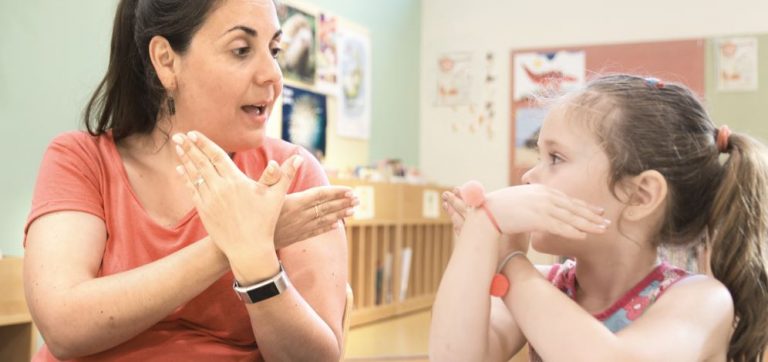By Amber Akapnitis, originally published in the December, 2021 issue of Equity & Access
As one of two school sites that make up the Arizona State Schools for the Deaf and the Blind, Phoenix Day School for the Deaf serves a large group of students and babies who are deaf, hard of hearing, blind, visually impaired, and deafblind.
We’d always used a mix of parent bulletins (sent home in children’s backpacks) and social media to communicate with parents, but we had no online platform for two-way communications. There was no feedback loop for parents to be able to respond to us; it was just “Here’s a paper, here are the upcoming events, and here’s what’s happening.”
Improving Engagement
Realizing that a one-way, broadcast communication approach wasn’t working, we looked at how one of our sister schools was using a free mobile app to send out emergency alerts (something we had handled via local TV stations). This app did not meet our needs so we set out on a search for another solution and found the ParentSquare program for communication, organization, and engagement between parents and schools.
After implementing it, we began to see immediate, positive results from that move. Here are five ways our online communication platform helped us work through our school-parent communication challenges:
1) Tailor it to your school’s needs
The first year that we adopted the communication platform, we used it solely for emergency announcements, and for staff to practice and make sure we understood how the messages got out. For the 2019-20 school year, we started using it for those emergencies and staff communications. Then the global pandemic emerged and we ramped up our usage of the platform for communicating with parents (primarily for COVID-19 updates). And in the 2020-21 school year, we started using the platform to share events and flyers that we usually would have sent home on paper to communicate updates. Basically, we’ve taken a phased-in approach to using the platform based on what we can handle and what we felt our parents could handle.
2) Accommodate different languages
About 54% of our families speak English or use American Sign Language (ASL), while 35-40% speak Spanish as their first language. Even when we used paper communications, everything was translated into Spanish because that’s our second most-spoken language for our families and we want to make sure they’re included. We had to use Google Translate and a team of interpreters to manage these communications, but with our communication platform we can now automatically and accurately translate the materials into Spanish. This gives our families an opportunity to see the content in their preferred language.
3) Add customized features to the communications
As a school for the deaf, we also want to publish our materials in English and ASL, the latter of which usually incorporates a video of someone signing. For announcements, I’ll just attach a file of myself or someone else signing the message. That way, we know everyone has access to the information they need.
4) No more forgotten notes home
Children don’t always get the notes in their backpacks to their parents in a timely manner. I’ve found a lot of crumpled up, old notes lying in the bottom of student backpacks. With our online communication platform, we avoid this problem and are able to share information quickly with the people who need it, and it’s very easy for our parents to get the information they need. It also helps create accountability. Whereas in the past there was no way to measure whether the parent got the piece of paper or not, now we can see exactly who read what with built-in data and insights. We can see the engagement, tell when parents leave comments, and answer their questions all in one place online.
5) Interact with parents directly
I really enjoy reading parent comments— something we didn’t have in the past. In fact, parents who have never called the school or attempted to communicate with administrators in the past are now more apt to leave a comment or ask a question. I recently posted about a town hall with me and I sent that out on ParentSquare and thought, “Oh, I’ll just add an RSVP here,” which we’ve never done before, and I had four or five families that RSVP’d that same day.

Easy to navigate and intuitive, our online communication program has really streamlined the process of family communications. Without it, we’d still be using paper, notes home, and a lot of postage to try to manage this responsibility. Having a consistent, reliable way to communicate COVID-19 changes and everything else that we need to talk to parents about—and doing it quickly online, right as things are changing—has been invaluable.
The American Consortium for Equity in Education, publisher of the "Equity & Access" journal, celebrates and connects the educators, associations, community partners and industry leaders who are working to solve problems and create a more equitable environment for historically underserved pre K-12 students throughout the United States.
- American Consortium for Equity in Educationhttps://ace-ed.org/author/admin/
- American Consortium for Equity in Educationhttps://ace-ed.org/author/admin/April 23, 2025
- American Consortium for Equity in Educationhttps://ace-ed.org/author/admin/
- American Consortium for Equity in Educationhttps://ace-ed.org/author/admin/







